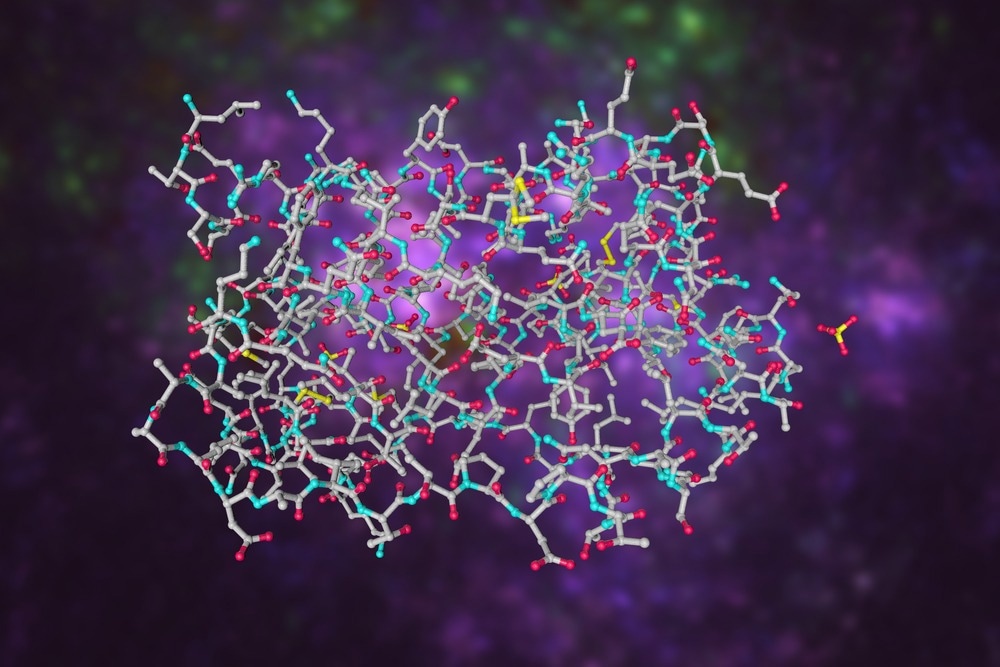In a recent study on the medRxiv* preprint server, researchers identified an interleukin 6 (IL-6) dependent alternative pathway as a therapeutic strategy against coronavirus disease 2019 (COVID-19).

Study: A Complement Atlas identifies interleukin 6 dependent alternative pathway dysregulation as a key druggable feature of COVID-19. Image Credit: MarynaOlyak/Shutterstock.com

 *Important notice: medRxiv publishes preliminary scientific reports that are not peer-reviewed and, therefore, should not be regarded as conclusive, guide clinical practice/health-related behavior, or treated as established information.
*Important notice: medRxiv publishes preliminary scientific reports that are not peer-reviewed and, therefore, should not be regarded as conclusive, guide clinical practice/health-related behavior, or treated as established information.
Background
The onset of severe acute respiratory syndrome coronavirus 2 (SARS-CoV-2) infections is marked by an inadequate antiviral reaction, which can be attributed to various factors originating from both the host and the virus.
In addition to supportive interventions, the management of COVID-19 during the hyperinflammatory phase involves the administration of corticosteroids, as well as IL6 and Janus kinase (JAK) inhibitors. The complement cascade is a crucial and versatile component of the innate immune system.
The aforementioned phenomenon plays a role in identifying pathogens and their subsequent elimination through phagocytosis. The activation of the three complement arms has been demonstrated in COVID-19. Nevertheless, the extent to which each arm contributes remains unclear.
About the study
In the present study, researchers offered a comprehensive description of the changes in complement during COVID-19. The team examined the potential involvement of complement dysregulation in COVID-19 pathogenesis.
To achieve this, estimations of activated complement components were performed in the plasma samples of COVID-19 patients enrolled in either the COV-AID or SARPAC clinical trials.
In 2020, two multicenter clinical trials were conducted, which involved the enrollment of hospitalized COVID-19 patients exhibiting hypoxia. The COV-AID study enrolled individuals with elevated levels of inflammatory serum markers.
Biomarkers, such as sC5b-9, were measured throughout the disease progression of patients enrolled in the ZILUCOV clinical trial. This allowed the evaluation of the effectiveness of anti-C5 therapy in treating COVID-19.
The complement cascade can be initiated by three distinct pathways: the classical, lectin, and alternative. The team estimated the upstream complement factors to determine the predominant factor in COVID-19.
Results
The present study revealed that COVID-19 patients exhibit significantly increased levels of complement factor 3a (C3a), C5a, and soluble membrane attack complex (MAC) in their plasma compared to healthy individuals of similar age.
The study involved comparing patients who did and did not experience a critical disease course characterized by the requirement for mechanical ventilation or mortality at any point.
When compared to non-critical patients, critical patients exhibited elevated levels of C3a and C5a, although the observed difference did not attain statistical significance for sC5b-9. The findings suggested that complement activation persists during the onset of respiratory decline in individuals with COVID-19.
The study found a correlation between the terminal complement pathway activation, specifically C3a, and the concentration of C-reactive protein (CRP), D-dimer, and ferritin on day 1. The study findings suggested a significant correlation between elevated sC5b-9 and C3a levels and poorer oxygenation status.
Additionally, the sC5b-9 marker exhibited a correlation with established biomarkers that are indicative of disease severity, including but not limited to the soluble receptor for advanced glycation end products (sRAGE), interleukin 10 (IL-10), granulocyte-colony stimulating factor (G-CSF), C-X-C motif chemokine ligand 10 (CXCL10), and IL-8.
The sC5b-9 molecule exhibited hierarchical clustering with primary inflammatory cytokines, including interferon-gamma (IFNγ), tumor necrosis factor-alpha (TNFα), and IL-6. The study indicated that the correlated markers were significantly higher in individuals who died than those who didn't, implying that complement plays a crucial role in COVID-19-associated inflammation.
The study found that C4a concentration remained unchanged in COVID-19 patients compared to age-matched healthy controls on days one and six. This indicated a minimal level of activity in the lectin and classical pathways.
The activity of the C1 inhibitor has been observed to significantly increase in individuals with COVID-19, which may potentially decrease lectin and classical activation in this population.
Furthermore, the Bb fragment of the complement factor B exhibited a significant increase in the plasma of COVAID and SARPAC participants at both time points, suggesting a rise in alternative pathway activity. Comparable to C3a and C5a, the levels of Bb were elevated in patients with critical illness compared to those without critical illness at the designated time intervals.
The study found that in COVID-19, the alternative pathway activation is the primary amplifier of complement, as evidenced by the superior predictive ability of cleaved factor B compared to C4a when measuring terminal pathway activation through the plasma C3a, C5a, or sC5b9 levels.
Conclusion
The study findings showed that the production of complement factors is not limited to the liver, and various cell types throughout different tissues are involved in the generation of complement.
The SARS-CoV-2 virus utilizes various strategies to evade prompt immune recognition, such as interfering with epigenetic regulation and obstructing complement through its ORF8 protein.
Furthermore, the study revealed that COVID-19 patients exhibited a heightened activation of the alternative pathway, particularly during the onset of respiratory failure. This was evidenced by the significant elevations in Bb levels, which were found to be predictive of the levels of activated terminal components.
The specific stimuli responsible for initiating alternative pathway activation during COVID-19 remain uncertain.

 *Important notice: medRxiv publishes preliminary scientific reports that are not peer-reviewed and, therefore, should not be regarded as conclusive, guide clinical practice/health-related behavior, or treated as established information.
*Important notice: medRxiv publishes preliminary scientific reports that are not peer-reviewed and, therefore, should not be regarded as conclusive, guide clinical practice/health-related behavior, or treated as established information.